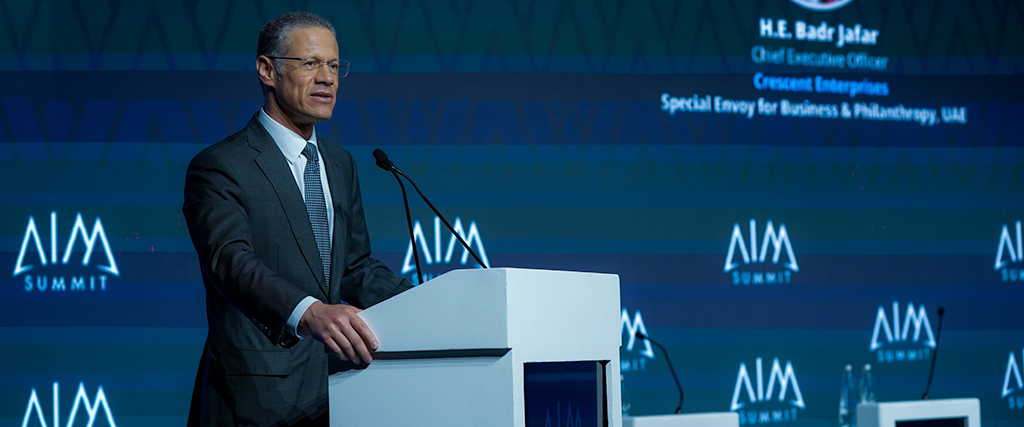Avoiding A Midlife Corporate Crisis
There’s an offbeat theory that middle-aged men tend to wear the same clothes, cut their hair the same way, and listen to the same music they did the last time they felt ‘cool’. Oblivious to the latest trends, a lot of people remain wedded to a style they associate with the most exciting time of their lives. And frankly, why shouldn’t they?
However, when middle-aged companies start doing the same thing, the consequences can be more severe. Even the world’s most successful brands – once at the forefront of innovation and entrepreneurialism – can get stuck in the same old patterns of thinking, long after the caravan has moved on. These companies might still perceive themselves as being on the cutting edge, right until the moment they fall off it. This is pertinent to the Gulf Region right now, where a number of traditional industries ripe for disruption have been dominated by the same firms since the 1970s and 1980s.
So what is the solution to this corporate conundrum? How can medium and large companies – including family firms and incumbent market leaders – preserve or reignite the spark of entrepreneurialism that they had when they were younger?
Well, for one thing, the answer is not for a CEO to throw on a hoodie and start running their business out of a garage. After all, not even Facebook is likely to be the next Facebook. Rather than imitating others, a few timeless rules can help more mature firms remain competitive in what some might consider to be a young company’s game:
1. Play To Your Strengths
How did Apple restore its reputation as one of the most innovative brands in the world? By excelling at something people already associated with it: stylish and intuitive design. The path to sustainable reinvention often begins where you already have access to the deepest reserves of skills, knowledge and expertise.
Entrepreneurialism without execution is worthless, too. In fact, for many established companies, their greatest strength over smaller rivals is a proven ability to scale up a good idea or promising innovation by manufacturing it reliably, marketing it effectively, and distributing it efficiently. Established companies are also generally more equipped to harness the power of big data to drive innovation and to test their technical and commercial hypotheses before rolling them out to market.
2. Team Up With High Calibre Partners
One of the greatest assets of any established company is the equity built into its brand. Among other things, it means other firms are far more open to collaborating on research and development – for both technical and marketing reasons – than they would be with a lesser known entity.
For example, golf brand Callaway unveiled its latest piece of state-of-the-art equipment in January 2016. Nothing unusual about that, except that its technical partner on the XR16 driver wasn’t another sports company. It was aerospace giant Boeing, whose aviation engineers – more familiar with runways than fairways – had helped to improve the aerodynamics of the club head.
Another example announced during last year’s National Innovation Week, UAE-based Aramex teamed up with InPost – the world’s largest network of parcel lockers – to install automated, self-service parcel lockers across Dubai, allowing customers to receive and collect e-commerce and other packages in a more convenient way.
3. Seek Out New And Different Perspectives
All organisations, but particularly those in a more mature phase of their evolution, can benefit from new and more diverse voices in the boardroom and management. This should include women and young people, who are often more in tune with emerging technology and consumer trends. This is particularly important in a region with the demographics of the GCC, where the average age is 27 years. That’s why the appointment last month of a Minister of State for Youth Affairs and establishment of a UAE Youth National Council was such a timely step forward for our Government.
It is critical that younger and more junior employees also feel that proposing new ideas isn’t just accepted, but is actively encouraged. In a start-up consisting of less than five people, this can be as simple as raising a new idea across a desk. For a medium-sized or large company, with hundreds or thousands of employees, achieving the same outcome requires dedicated policies and a management culture – set at the top – that is conducive to entrepreneurialism and rewards it.
Having a strong purpose-driven mission can also help spur innovation by serving as a constant reminder to prospective talent and partners why the work you are doing really matters to both people and the planet. Research suggests that this is something Generation Y jobseekers increasingly expect from potential employers and the companies they purchase goods and services from.
4. Find The Right Ecosystem
In January of this year, G.E. announced it was moving its global headquarters to Boston. Why there? According to the company, it wanted to place itself in the middle of the city’s 55 colleges and universities, including Harvard, MIT and Northeastern University. The City of Boston and the State of Massachusetts are also building a new innovation centre where G.E. employees and local researchers will collaborate.
The key to any successful innovation ecosystem is this kind of synergy between the public, private and academic sectors. That’s why one of the chief competitive advantages of the new Sharjah Entrepreneurship Centre at the American University of Sharjah, known as Sheraa, is the access it offers to Sharjah University City, its 15 educational institutions and 20,000-strong diverse student population, and the local public and private sectors.
Established firms are generally in a better position than smaller rivals to place themselves at the heart of these kinds of environments, and to help shape them in meaningful ways. What it requires though is a recognition that the next great idea for your company might come from somebody that is currently outside of the business. You need to bring them (and their creativity) into your orbit.
This is almost conventional wisdom in the technology sector. For example, Microsoft has created an international network of state-of-the-art, branded innovation centres in partnership with government, educational institutions and private sector companies. There are over 100 of these centres in India alone, connecting the company with students, entrepreneurs and start-ups, and helping them to develop their skills and ideas.
5. Invest In People
The next time you read about an obscure tech start-up that has been acquired for some obscene valuation, think about what the buyer is really paying for. Increasingly, it isn’t just the product or the underlying technology. Rather, companies making acquisitions today will often have more interest in the engineering talent behind the products than they do in the technology itself. They believe that the right talent can help fuel their own entrepreneurial ambitions and are prepared to pay top dollar to bring it in-house.
These companies know that human capital drives innovation more than any other factor. That’s why in the Middle East and North Africa, where youth unemployment continues to be compounded by skills shortages, education must be viewed as an economic investment just as much as it is a social one. More than most, established companies have a vested interest in underwriting that investment and helping to build a workforce tailored to the current and emerging needs of employers. The impact of innovative social enterprises such as Education for Employment (EFE) – that provides youth with job-relevant training and connects them with employers – is also significant.
It is often said that the classic start-up philosophy – reportedly exemplified by a young Facebook – is to “move fast and break things.” That’s an exciting proposition, but it isn’t the only way to do business. For more established firms, the goal should be to foster an entrepreneurial culture that is consistent with the organisation you are today, but that allows you to evolve into the company you want to be in the future. In other words, to age gracefully, while remaining young at heart.
As featured in The National on 6 March 2016.

 Tweets by @BadrJafar
Tweets by @BadrJafar




